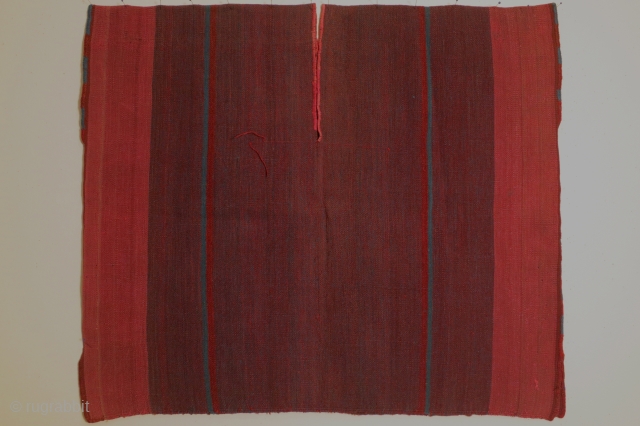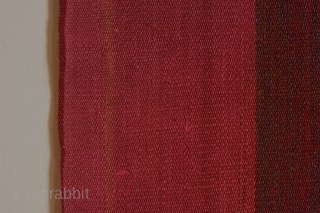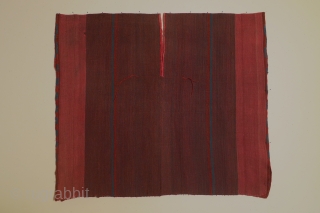Back
Bolivian Aymara small tunic, 16th/17th century, 25 x 28 inches ( each side). The tunic garment type is characterized by having side edges that are sewn together up to the area left open for the wearer's arms. The embroidered binding holding the sides together is composed of alternating bands of red and blue thread, harking back to the multicolored binding bands found on Inca imperial offical state tunics. In ponchos, the sides are completely open and unjoined.. Tunics are perhaps the rarest surviving Aymara textiles. Tunics were outlawed by the Spanish conquerors in 1781 and were followed by poncho styles. a Kawa ponchito, dimensions 26 x 35 inches ( each side) in the Metropolitan Museum of Art. ny is very similar in its pattern/color layout.This early textile is in exceptionally good condition with only one small hole on one side. It has no restoration or reweaving.
price:
POR
- Home
- Antique Rugs by Region
- Category
- Profiles
- Post Items Free
- Albums
- Benaki Museum of Islamic Art
- Budapest: Ottoman Carpets
- Gulbenkian Museum
- Islamic Carpets. Brooklyn
- Islamic Textiles. Brooklyn
- Konya Museum: Rugs
- MKG, Hamburg
- MMA: Caucasian Carpets
- MMA: Mamluk Carpets
- MMA: Mughal Indian Carpets
- MMA: Ottoman Carpets
- MMA: Safavid Persian Carpets
- MMA: Turkmen Rugs
- McCoy Jones Kilims
- Ottoman textiles. Met
- Philadelphia Museum
- Rugs and Carpets: Berlin
- Seljuqs at the Met
- TIEM, Istanbul: Carpets
- V&A: Classical Carpets
- Vakiflar Carpets: Istanbul
- Baluch Rugs: Indianapolis
- Gallery Exhibitions
- Jaf an Exhibition
- Alberto Levi Gallery
- Andean Textile
- Christie's London: 2016
- Francesca Galloway
- HALI at 40
- ICOC Washington, DC 2018
- Jajims of the Shahsavan
- London Islamic Week April, 2018
- Mongolian Felts
- Navajo Rugs: JB Moore
- Persian Piled Weavings
- SF Tribal & Textile Art Show 2020
- SF Tribal 2019
- Sotheby's: C. Alexander
- Turkish Prayer Rugs
- Turkmen Main Carpets ICOC 2007













